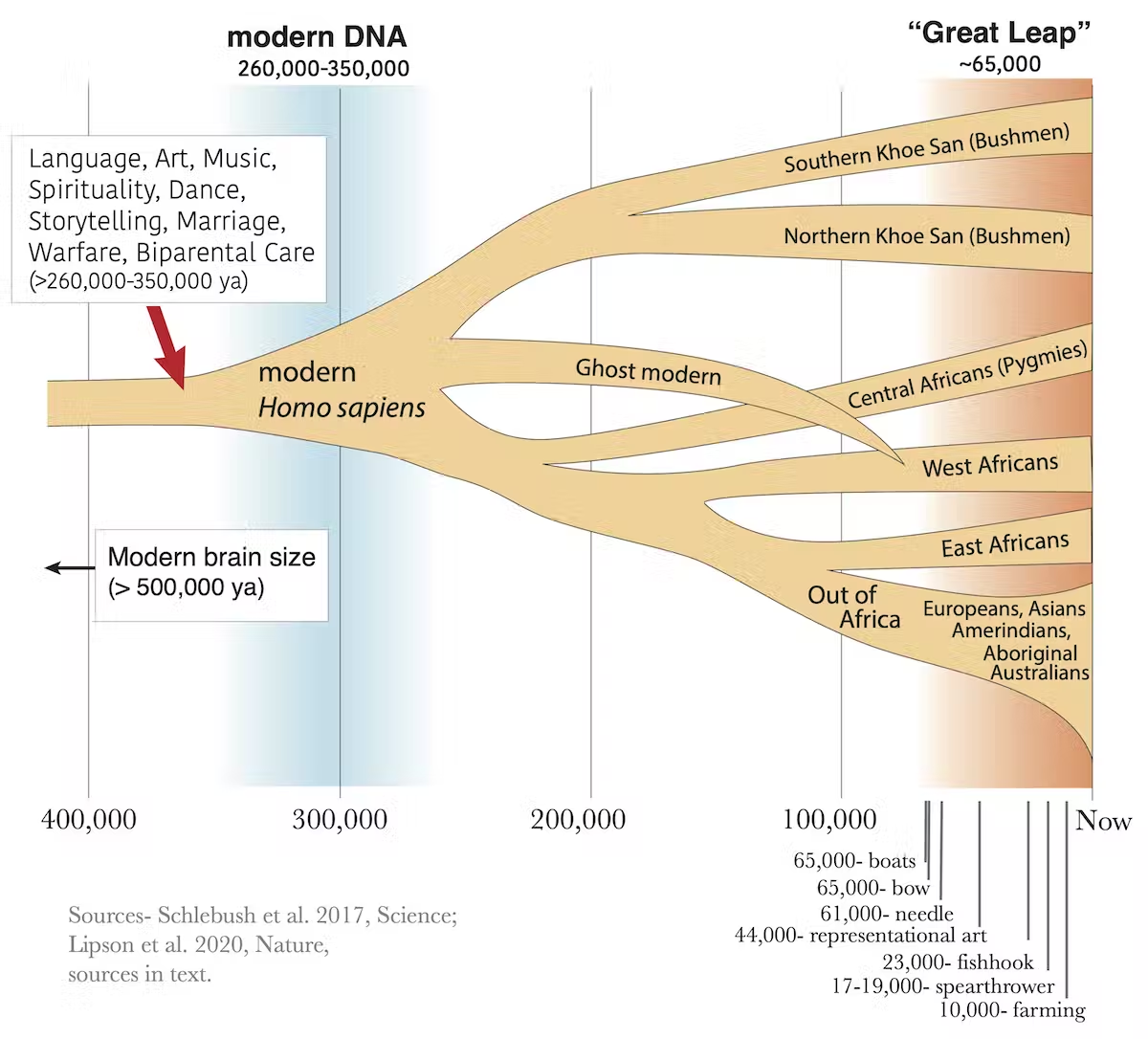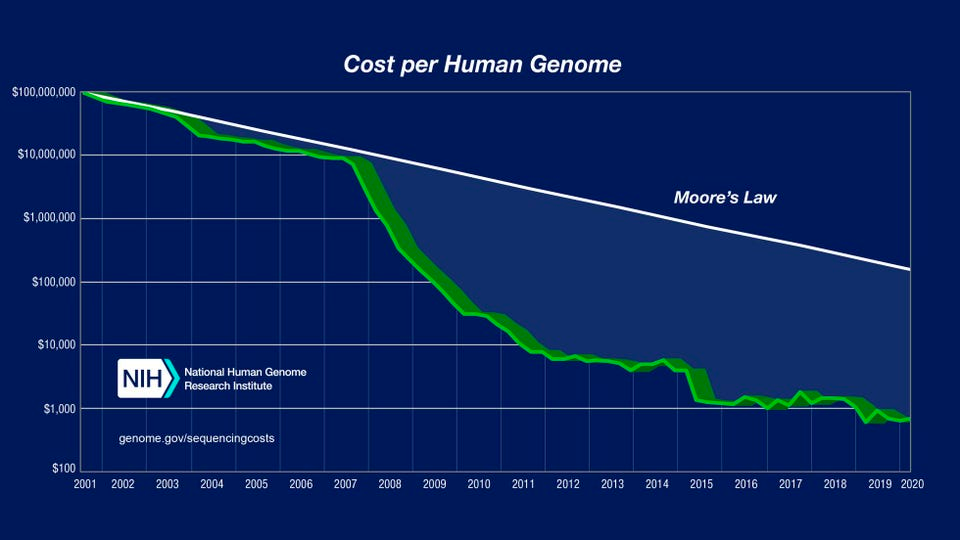Moravec’s Paradox for Ag Robotics
I.
The rice and the chessboard problem is a well known fable about exponential growth.
What repeated consistent digital doubling means, exactly, is best demonstrated through a story about an emperor and a chessboard. As legend has it, when chess was invented in sixth century India, the inventor was given an audience with the emperor.
When asked to name his prize, the inventor asked for a single grain of rice to be placed on the first square of the chessboard, two to be placed on the second, four on the third, and so on, with the quantity of rice doubling every square.
What most people, including the emperor, fail to realize is that if this pattern continues, by the final square the emperor would owe the inventor eighteen quintillion grains of rice, more rice than has been produced in the history of the world.

Image source: https://michiganfuture.org/2017/01/chessboards-and-rice/
Computing has had its own version of exponential growth, also known as Moore’s Law.
Moore's law is the observation that the number of transistors in a dense integrated circuit (IC) doubles about every two years.
The layman’s explanation is that computing speed will double every two years.
Moore’s law has been effective for the last 40 years (We haven’t made all the way through the chessboard yet) and we have seen tremendous advances in computing power. Increasing computing power is a never ending project.
II.
There are certain types of problems, which have proved especially hard, even though there is a significant talk of robots or AI (Artificial Intelligence) taking over the world to make humans redundant. In spite of many advances in computing power, machine learning, and deep learning, many problems are still quite intractable or have recently become a bit more manageable.
We have not seen broad adoption of general purpose robots like C3PO from Star Wars or Marvin from Hitchhiker's Guide to the Galaxy.
How can we explain the challenges encountered by ML/AI and huge amounts of computing power to solve seemingly simple problems?
One explanation is the Moravec’s Paradox.
Moravec's paradox is the observation by artificial intelligence and robotics researchers that, contrary to traditional assumptions, reasoning requires very little computation, but sensorimotor and perception skills require enormous computational resources. The principle was articulated by Hans Moravec, Rodney Brooks, Marvin Minsky and others in the 1980s.
Moravec wrote in 1988,
it is comparatively easy to make computers exhibit adult level performance on intelligence tests or playing checkers, and difficult or impossible to give them the skills of a one-year-old when it comes to perception and mobility
If we apply this to agriculture, Moravec’s Paradox says it will be relatively easy for computers to solve problems like make prescriptions, analyze seed performance, but hard to solve problems which require perception and fine motor movements like picking a fruit or removing a weed.
But why does AI struggle with the simple? The explanation behind Moravec’s paradox revolves around evolution, understanding, and perception. (You can watch this video which explains the 5 different levels of difficulty for robotics0
The skills that we define as ‘simple’ — those we learn instinctively — are products of years and years of evolution. So, while they may appear simple, it’s only because of thousands of years’ worth of tuning.
Things we consider simple are seeing things, recognizing them, lifting them, and moving them around. The complexity of the simple skills we take for granted is invisible, as we have learnt it through thousands of years.
As Erik Brynjolfsson, Director, Stanford Digital Economy Lab pointed out in his fantastic essay, “The Turing Trap: The Promise & Peril of Human-Like Artificial Intelligence”
Humans have evolved over millions of years to be able to comfort a baby, navigate a cluttered forest, or pluck the ripest blueberry from a bush, tasks that are difficult if not impossible for current machines. But machines excel when it comes to seeing X-rays, etching millions of transistors on a fragment of silicon, or scanning billions of webpages to find the most relevant one.
III.
Why is it difficult to do agriculture robotics?
In “Ag Robotics is difficult AF” I had given examples of strawberry picking, which is considered a low to medium skill task for humans.
Picking strawberries at scale, and picking them consistently requires practice and skill. You have to judge if the strawberry is at the right ripeness for picking, grab the stem, twist it, and put the strawberry in your basket, without bruising or damaging the strawberry. Human beings are good at following the process to find strawberries with the right ripeness, grab the stem, twist it, and put it in a container.
Try to build a robot which can do the same job with human or better efficiency, and it is difficult AF.
The difficulty is due to Moravec’s Paradox, and the challenge to train your machine learning, and AI models to learn thousands of years of human evolution in a few years.
IV.
In 2022, The Mixing Bowl did a study of the agriculture robotics landscape.
For the purposes of this robotic landscape analysis, we focused on machines that use hardware and software to perceive surroundings, analyze data and take real-time action on information related to an agricultural crop-related function without human intervention.

As can be seen from the chart above, vision-aided robotic pickers and vision-aided spot sprayers are some of the hardest problems to solve within agriculture robotics.
The Western Growers harvest automation report from 2021, reached similar conclusions.
Current adoption of automation in harvest and harvest related activities is low, but significant advancements are expected in the next 3-5 years. Due to Morevac’s Paradox, harvest technologies are not as far advanced as pre-harvesting, and harvest assist activities as can be seen from the chart below.

Primarily, the study finds that the overall advancement of harvest automation in the fresh produce industry is so far limited, mainly due to the technical difficulties in replicating the human hand to harvest delicate crops.
Western Growers summary from their 2021 report succinctly highlighted the limits imposed by the paradox.
V.
If going past Moravec’s Paradox requires unwinding and learning the evolutionary process, which has happened over thousands of years, do we have a realistic chance of solving these problems in the near future?
Can we replay the evolutionary learning process to teach computers and robots what humans have learnt over thousands of years?
The diagram below is a schematic representation of the modern Homo sapiens, which has happened over 400,000 years. If we assume 400,000 years and 25 years being average for a generation, then we get 400000/25 = 16000 generations of evolution. If we assume human evolution to have been going for 4 million years, we end up with 160K generations.
Will we be able to replay 160K generations of evolutionary learning and teach robots and algorithms in a short period of time?

Source: The Conversation
VI.
Are there examples where we have shown drastic improvements in our learning in a very short amount of time - maybe exponential growth, similar to Moore’s Law?
There are other examples where we (as in humans) have made progress faster than Moore’s Law. A striking example is the cost per human genome, which has reduced from $ 100 million to $ 1,000 (and falling) in just 20 years.

Another example is Training Compute (FLOPs) of milestone Machine Learning Systems over time. According to Wikipedia, floating point operations per second (FLOPS, flops or flop/s) is a measure of computer performance, useful in fields of scientific computations that require floating-point calculations.

Source: Compute trends across three eras of machine learning
Reference: Parameter, Compute and Data Trends in Machine Learning by Jaime Sevilla, Pablo Villalobos, Juan Felipe Cerón, Matthew Burtell, Lennart Heim, Amogh B. Nanjajjar, Anson Ho, Tamay Besiroglu and Marius Hobbhahn; 2021.
The report's summary shows extremely fast improvements in computing power over the last 10-15 years.
Our findings seem consistent with previous work, though they indicate a more moderate scaling of training compute. In particular, we identify an 18-month doubling time between 1952 and 2010, a 6-month doubling time between 2010 and 2022, and a new trend of large-scale models between late 2015 and 2022, which started 2 to 3 orders of magnitude over the previous trend and displays a 10-month doubling time.
Over the last few years, we are beginning to see AI go past the Moravec’s Parodox. We are beginning to see AI tools like image classification and facial recognition, typically learnt by a child quite naturally.
Will we be able to compress human evolutionary learning in a few years with sophisticated machine learning and AI tools?
VII.
Should robotics, AI, and ML focus exclusively on automation and replacement of human tasks as performed today? It is tempting to think automation is the holy grail to solve problems associated with human labor, and efficiency.
A common fallacy is to assume that all or most productivity-enhancing innovations belong in the first category: automation. However, the second category, augmentation, has been far more important throughout most of the past two centuries. One metric of this is the economic value of an hour of human labor. Its market price as measured by median wages has grown more than ten-fold since 1820. An entrepreneur is willing to pay much more for a worker whose capabilities are amplified by a bulldozer than one who can only work with a shovel, let alone with bare hands.(From Erik Brynjolfsson’s essay)
We have seen the development and adoption of collaborative robots (or cobots) as a way to augment human capabilities rather than to replace them completely.
Augmenting humans with technology opens an endless frontier of new abilities and opportunities. The set of tasks that humans and machines can do together is undoubtedly much larger than those humans can do alone.

Source: The Turing Trap: The Promise & Peril of Human-Like Artificial Intelligence
Some examples of augmentation in Ag Robotics are new robotic platforms successfully undertaking labor-saving tasks which are not very difficult. For example, the GUSS autonomous sprayer can work in orchards. The GUSS machine navigates autonomously to adjust spraying based on its ultrasonic sensors.
Other examples include Burro’s smart farming system. The system is described as augmenting human capabilities and working side by side with farm workers.
We've built a smarter farming system using user-friendly, autonomous robots that work side-by-side with farm workers to make agriculture more productive and sustainable.
VIII.
In summary, Moravec’s Paradox is a real barrier to progress in Ag robotics, but we have made tremendous strides in going past it. Given that augmentation of human capabilities can create far more efficiency than just pure automation, researchers, and entrepreneurs should constantly look for ways to augment, rather than putting all their eggs into automation and replacement of human skills.


